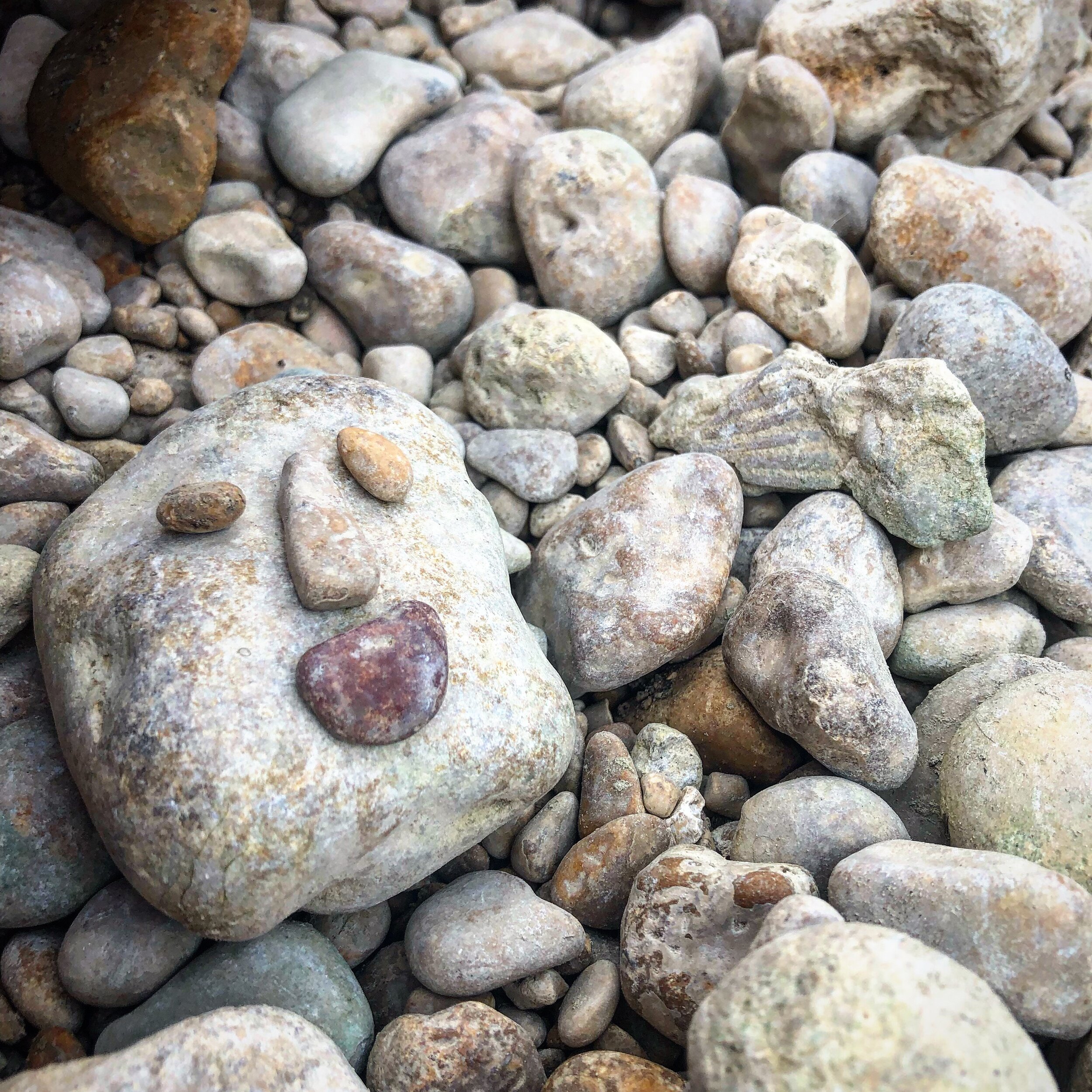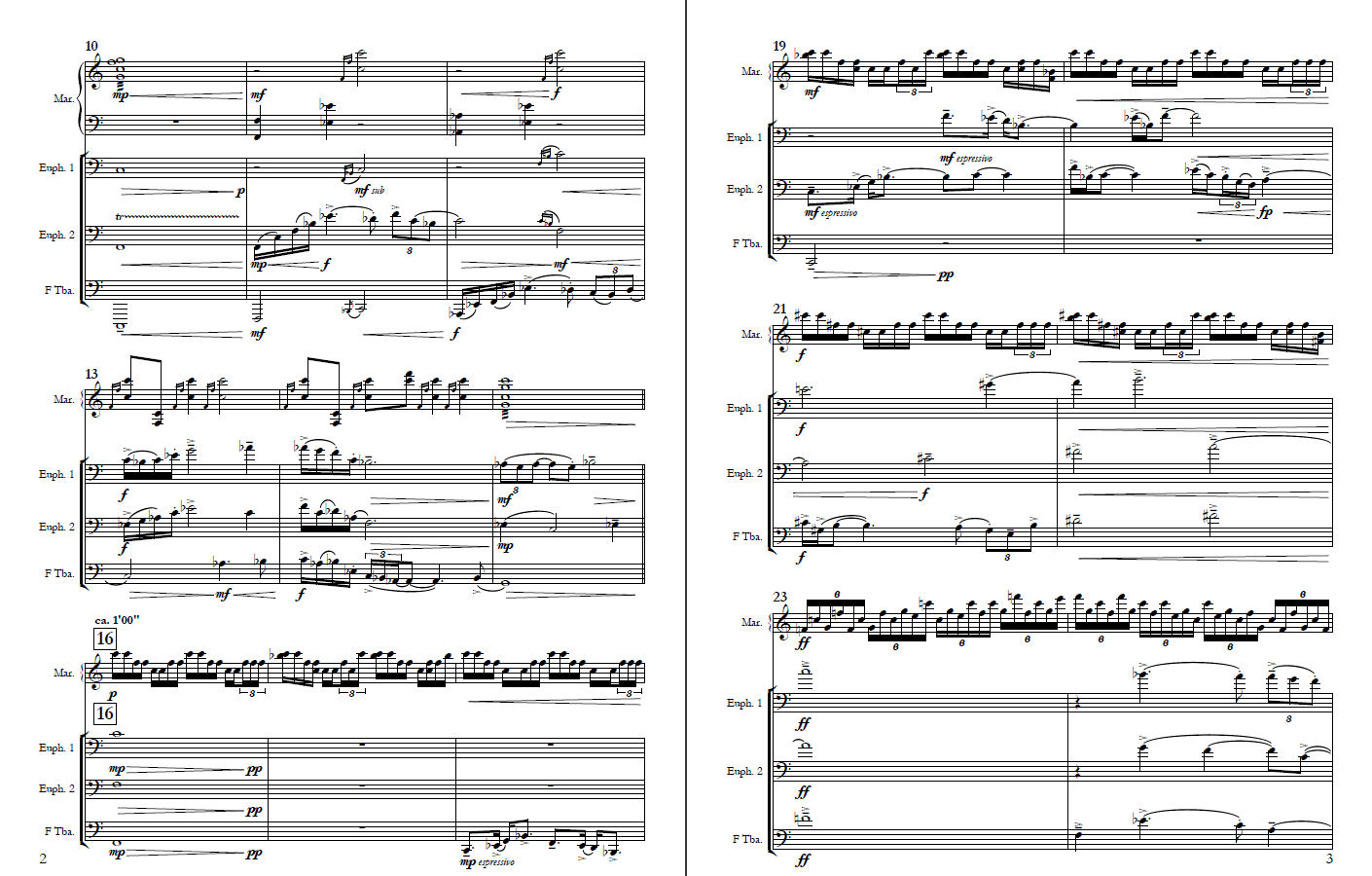Project 12: A Disaster, Naturally
Another beautiful skyline in Portland—a great companion for composing works about nature the last few weeks!
After a hectic week off from Project 12, the following weeks were another whirlwind of excitement, learning, and collaboration! For Week 9, I worked with college-age students from Hattiesburg, Mississippi, who put together a consortium to commission a new work for two euphoniums, bass tuba, marimba, and electronics! For Week 10, a duo for trumpet and marimba was commissioned by someone who wishes to remain anonymous, as they are giving their commission as a surprise Christmas gift—but I will be writing about the piece itself in a post later this week!
Wrap-Up: Wild Orbits
Talking with Allen Parrish (the main coordinator for the Week 9 project and a composer in his own right), he and his colleagues wanted to commission a work about natural disasters. Around the time we were first chatting, the west coast was in the midst of its battle against a particularly awful wild fire season, and the resultant smoke spread across large swaths of the US—including here in Portland. Living in Mississippi, Allen and his colleagues (listed on the first page of the score excerpts below) have all been personally affected by hurricanes (another gift of 2020), and felt there was an opportunity for a piece to connect these and other natural disasters to one another.
They hoped for a piece that would capture the decimation and uncertainty these disasters bring, rather than on the disasters themselves. They also requested for it not to follow the standard form of “storm-aftermath-hope,” and wanted something that followed a more undefined structure. One of the euphonium players asked for there to be technical passages with lots of notes, while another hoped to have more expressive playing. Another wanted a part with lots of syncopation and articulation challenges. When talking about their individual music tastes, styles ranged from heavy metal to military band music to lo-fi and to jazz. In short, I had my work cut out for me!
“Earth has no sorrow that earth cannot heal.” - John Muir
Starting the Piece:
As I started writing, I kept thinking about the relationship between man and nature—or rather, how natural disasters are often exacerbated by acts of man. Fires in California grow worse each year not just because of global warming, but because we continue to allow people to build in fire-zones, providing an overwhelming amount of new fuel to feed seasonal fires. Places like Houston are built over swamps, destroying natural run-off areas for heavy rains, allowing the damage of hurricanes to spread further inland. We rebuild and reinvest in these areas, and often end up making the problem worse as we try to mitigate and out-prepare these unstoppable forces (and—of course—slow, ineffective responses to disasters further exacerbates these problems). These changes in both nature and in our responses to the world around us cause us to orbit one another evermore precariously. Instead of allowing us to find some kind of coexistence/balance, our responses become more extreme—and these orbits begin to spiral dangerously out of control.
All of the samples heard in the electronics are field-recordings of the natural world (birds, thunder, wind, ocean waves, rocks, etc.) that have been manipulated to varying degrees. The piece follows the struggle between the natural world and man, and the impact it has on both.
Whenever I write for instruments and electronics, the process is always radically different from piece to piece. For Wild Orbits, I started with the electronics, writing about two minutes worth of material before even opening a Sibelius file. My two reasons for doing this were 1) to ensure times where the electronics had supremacy over the acoustic material (rather than having it be completely subservient), and 2) to solidify the soundscape I would be writing within for the instruments. For those curious, my DAW of choice is Reaper.
Luckily, I had a huge sound library of nature-specific files to work with, accumulated over various projects. While some audio came from FreeSound—a fantastic Creative Commons resource for anyone in need of audio samples to work with!—many others came from field recordings I’ve made during my travels (before moving to Portland and going on lockdown this year, I use to make field recordings as a way to “journal” about places I’ve been). Using very simple manipulations (adjusting pitch and formants, playback speed, reverb, and panning, as well as playing some samples backwards and lots of EQ-ing), I was able to transform birds, rocks, thunder, crickets, ocean waves, and other natural sounds into a very different kind of soundscape—one which I was very excited to start playing in as I began writing for the acoustic instruments.
Excerpts:
To start, the electronics sound a low boom while the marimba softly rolls in a higher register. Euphonium 1 enters with a long, expressive melody in a warm register, while Euphonium 2 and the Tuba work to fill out the bass. The marimba stays in treble clef, but moves downwards as the chords become more widely-spaced. A high, overtone-rich whine oscillates in the background (comprised of bird calls). While there are larger sections throughout the work that the electronics and instruments need to align, I purposefully made the electronics unmetered textures the slowly shift into new sections, rather than hard cuts the ensemble needed to synchronize with (Note: this version of the score simply has the music and time stamps for easier viewing here—in general, it’s good to give some visual representation or short description of the cues in both the score and parts when using electronics).
This simple melody-and-accompaniment texture gives way to a sixteenth-note gesture that catapults upwards, passing between instruments before moving downward together. The section culminates at tutti arrival in measure 16, the high metallic whine giving way to the unedited bird calls of which it was made. As the electronics shift in character, the marimba is swept up in the tide and carries the rest of the ensemble along with it. Two long whistles sound over the instrumental solos, turning owl hoots into train whistles. Each instrument gets a short moment to shine with thematic material before catapulting into their highest registers, only to descend quickly downward again—never returning to this high texture as a group again. Even in this short moment of triumph, the electronics sound small, distorted interruptions.
As the texture decays, manipulated rock samples group together and fall away, dropping the ensemble at m. 28 where the tuba and second euphonium march forward with a rhythmic bass line. This section provides a soloistic moment for the first euphonium over low thunder rolls, bird calls, and crickets. Eventually, the second euphonium joins the first, adding a bit of countermelody as the marimba performs long, wave-like textures.
At m. 44, the marimba suddenly sounds a series of grace-note-laced quarter notes, as the brass work together to create a crashing wave of their own. The ensemble arrives at a rare rhythmic unison, as the marimba weaves smaller waves through the texture. The cricket sounds become more prominent, but almost sound more like rain here, hinting at the storm to come in m. 56. Here, I wanted to give the euphoniums and marimba a chance to do some fast, independent playing, and this structured improvisation provides enough textural contrast for the tuba to shine with a soaring, melancholic melody. The electronics use cricket sounds throughout to create fast, metallic swells and low, haunting whines reminiscent of sleigh bells and suspended cymbals. This section is followed by a brief return to the driving rhythmic material of before, now with the bassline in the marimba as the brass flit between beats.
The arrival at measure 79 returns to the very opening texture, now with ghost-like voices sounding in the background (taken from owl samples). The brass also create a more haunting soundscape with small glisses between notes. The marimba, which first sounded in a higher register during the opening, now sits squarely in the bass clef—first expanding from two notes to four, then descending to the low E. The crossfading effect in the brass and marimba helps to further create a sense of unease, each instrument acting both independently and as a part of the larger soundworld to accompany this final melody from the first euphonium. This last section makes no promises of hope or further impending disaster, but leaves the listener with an unsettled feeling—all the material from the opening, but different; like walking into a closed school or boarded-up city center. The piece ends on a quiet, low E from the ensemble.
Wind-Up: You and Me, Filigree and Just Another Climb
Weeks 10 and 11 are all wrapped up, and I can’t wait to share these fun and exciting works with you! Week 10 is a commission for trumpet and marimba duo (intended as a surprise Christmas gift for sister musicians!), and Week 11 is a collaboration with The Merian Ensemble (founded by harpist and Project 12 commissioner, Elisabeth Remy Johnson, and comprised of musicians from the Atlanta Symphony Orchestra) about female mountaineers!
My collaborator for Week 11 is The Merian Ensemble—a chamber music group composed of Atlanta Symphony Orchestra musicians Elisabeth Remy Johnson, Christina Smith, Emily Brebach, Marci Gurnow, and Jessica Oudin.
That this commissioning series has included musicians from so many different performance levels—from amateur and beginning musicians, to collegiate and young professionals, and even established masters and educators), has really made Project 12 a truly inspiring set of pieces to work on the last three months. There is still a lot of work left to do before the end of 2020—including wrapping up the theatrical work for percussion from Week 6, writing blogs about Weeks 10, 11, and 6, and writing the very last project for the series!!—but I wanted to take a moment to acknowledge the sheer breadth and variety of tastes and technical levels I’ve gotten the opportunity to write for these past weeks.
New music is truly needed for all levels of performance, and even those musicians not pursuing music professionally still have so much passion, care, time, and inspiration to contribute to the music world. I hope this series inspires more composers to seek out opportunities to write for every kind of musician—and more musicians of any level and background to seek out living composers to work with!
Wishing all of you a wonderful week—and hoping you all get a chance to rest between now and the start of the new year! Happy music-making, everyone!








